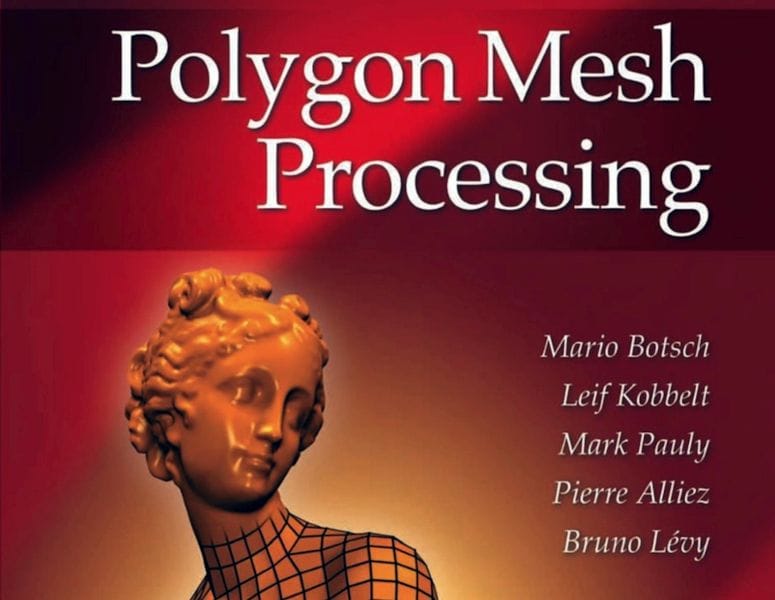
This week’s selection is “Polygon Mesh Processing” by Mario Botsch, Leif Kobbelt, Mark Pauly, Pierre Alliez, and Bruno Levy.
Did you ever wonder about the complexities of mesh processing? The magic of 3D printing is in no small part due to the availability of 3D digital meshes, which describe 3D objects in very precise ways.
STL is one example of many mesh file formats that are commonly used in 3D printing to describe objects.
But what can you do with a mesh? If confronted with an STL file, you might think there’s not much that can be done unless you change the originating CAD model and regenerate the STL.
One tool that’s commonly used to manipulate 3D meshes is the open source Meshlab tool, but its many deep menus portray dozens of obscure operations that can be quite baffling if you don’t know how to handle meshes and what you can do with them.
That’s where this book come in. It provides a complete end-to-end explanation of meshes, beginning with their definition: how a surface is described with a mesh, including face or edge-based approaches.
Different approaches to mesh smoothing are described, including the popular Fourier transform approach.
Three popular functions have entire chapters devoted to them: Remeshing, where you replace the entire mesh with a better one (hopefully); Simplification, where you are reducing the number of triangles in a mesh to provide a more easily processed 3D model without losing significant resolution; Model Repair where the inevitable problems of non-solid 3D models are detected and resolved without corrupting the original 3D model’s design intent.
This is a heavy tome, but for those wishing to go a bit deeper and gain a more full underst anding of these common mesh operations, it could be a good choice.
Via Amazon

